10 Best Adventures of 1938
By:
May 24, 2018
Eighty years ago, the following 10 adventures — selected from my Best Nineteen-Thirties (1934–1943) Adventure list — were first serialized or published in book form. They’re my favorite adventures published that year.
Note that 1938 is, according to my unique periodization schema, the fifth year of the cultural “decade” know as the Nineteen-Thirties. Therefore, we have arrived at the apex of the Thirties; the titles on my 1938 and 1939 lists represent, more or less, what Nineteen-Thirties adventure writing is all about. That is, a dialectic synthesis of the romantic, uncanny adventure of the Teens and the wised-up, hardboiled adventure of the Twenties.
PS: Another terrific source of adventure story-telling that began in 1938 was Orson Welles’s Mercury Theatre on the Air. In the first year alone, Welles — a man of superlative taste — dramatized “Dracula,” “Treasure Island,” “A Tale of Two Cities,” “The Thirty-Nine Steps,” “The Count of Monte Cristo,” “The Man Who Was Thursday,” “Sherlock Holmes,” “Around the World in Eighty Days,” and of course, “The War of the Worlds.” Welles’s The Campbell Playhouse, which began in late 1938, would dramatize “Rebecca,” “Mutiny on the Bounty,” “The Glass Key,” “Beau Geste,” “Lost Horizon,” “Only Angels Have Wings,” and “Huckleberry Finn”; and Welles voiced the title character of the 1937–1938 radio adventure serial The Shadow.

Please let me know if I’ve missed any adventures from this year that you particularly admire. Enjoy!
- C.S. Forester’s Horatio Hornblower historical sea-going adventure Flying Colours (serialized 1938; as a book,1939). In this unusual Horatio Hornblower adventure, Hornblower has surrendered his ship, the Sutherland (after the Battle of Rosas Bay, recounted in the previous series installment, A Ship of the Line), and is now a prisoner in a French fortress. He and his first lieutenant, Bush, who lost a foot in the battle, are to be taken to Paris and executed on charges of piracy; even if he did make it back to England, Hornblower will face a mandatory court-martial for surrendering his ship. His wife, whom he doesn’t love, is pregnant. Along with the Sutherland‘s coxswain, Brown, Hornblower and Bush escape from their captors and find harbor with a sympathetic French nobleman… and his beautiful daughter-in-law. Will they ever make it back to England? Although there is some thrilling action along the way, this is a story about Hornblower’s character — his keen awareness of his own shortcomings, his dissatisfaction with glory. Fun facts: Published as the third installment in the Horatio Hornblower series, Flying Colours is eighth by internal chronology. It is one of three Hornblower novels adapted into the 1951 film Captain Horatio Hornblower R.N., starring Gregory Peck.
- C.S. Lewis‘s Out of the Silent Planet (1938). When Dr. Ransom, a Cambridge professor of philology, prevents physicist Dr. Weston (along with Weston’s accomplice, the cynical and grasping Dick Devine) from forcing a dull-witted young man into a spherical structure in Devine’s back garden, he is drugged by the unscrupulous duo. When he regains consciousness, Ransom finds himself in a spacecraft en route to Malacandra (Mars). Ransom escapes, explores the planet, and is befriended by a tribe of hrossa. Pursued by Weston, who aims to help humankind colonize the universe exploiting its resources, and Devine, who is just trying to get rich, Ransom seeks out Oyarsa, a spirit-like creature who rules Malacandra. She explains that Earth (“Thulcandra,” the silent planet) is ruled by an evil spirit, then permits the three humans to return home — if they can make it there alive! Fun facts: The first installment in Lewis’s Cosmic Trilogy; the sequels are Perelandra (1943) and That Hideous Strength (1945). Lewis claimed that the Radium Age sci-fi novel Arcturus, by David Lindsay, gave him the idea of using planets less as places than as spiritual contexts. This novel was written up by Mark Kingwell in HILOBROW’s CROM YOUR ENTHUSIASM series.
- Graham Greene’s crime adventure Brighton Rock (1938). Considered by many Greene fans to be his best thriller, Brighton Rock concerns the quest of the bourgeois Ida Arnold to prove that the suicide of Fred Hale, a newspaperman who’d written about a gang of racketeers in the seaside town of Brighton, was in fact murder. Ida suspects Pinkie Brown, a teenaged sociopath who has assumed control of the gang; but when she attempts to get a witness — Rose, a naive young waitress — to tell the truth, Pinkie marries Rose. Pinkie’s gang is losing faith in him, his rivals are closing in… what will he do? There is a theological subtext to the story: Pinkie is a Catholic, and his beliefs about the nature of sin and the basis of morality are — we are given to understand — superior to Ida’s non-religious moral sensibility. It’s also an indictment of English mass culture, from popular newspapers to slot machines, soulless day trippers, and pop music on the radio. Fun facts: Adapted as a 1947 movie starring Richard Attenborough as Pinkie; Carol Marsh won the part of Rose after thousands auditioned. A 2010 adaptation starred Sam Riley as Pinkie, and Helen Mirren as Ida Arnold. Morrissey’s song “Now My Heart Is Full” references Brighton Rock characters: “Dallow, Spicer, Pinkie, Cubitt.”
- Eric Ambler’s espionage adventure Cause for Alarm. While in Milan, Nicky Marlow, a young engineer selling British grenade-making machinery (on the eve of another world war), is approached by German, Soviet, and Yugoslavian agents seeking his aid in gathering intelligence from Italian armament manufacturers. When he finds both his career and his life threatened by the Nazi agent, not to mention by Mussolini’s secret police, who use casual violence as a tool of social control, Marlow must place his trust in Andreas Zaleshoff, an anti-fascist American businessman of Russian descent who may be a Soviet spy. When Marlow and Zaleshoff flee the city, heading through northeastern Italy, by train and on foot, to the Yugoslavian border, the story kicks into high gear. (Some readers feel that this is where the story becomes too Buchan-ish; Ambler is the link connecting Buchan with Le Carré.) Like many of Ambler’s protagonists, Marlow must tap into a hidden reservoir of bad-assery. Fun facts: The charming and heroic Zaleshoff and his beautiful sister, Tamara, also an anti-fascist agent, also play a significant role in Ambler’s 1937 thriller Uncommon Danger.
- Nicholas Blake’s Nigel Strangeways crime adventure The Beast Must Die. The first third or so of this novel, which Nicholas Blake fans consider his most distinctive and possibly his best, is dedicated to the diaries of Frank Cairnes, a mystery novelist and widower plotting revenge against whomever killed his son, Martie. It was a hit-and-run, so Cairnes doggedly interviews everyone who lives in the vicinity until he finally tracks down his man: the contemptible George Rattery; Rattery is married to a young movie starlet, whom Cairnes seduces in order to gain entrée into their home. The diary ends as Cairnes is about to stage a lethal accident for Rattery… and the novel switches to the third-person, after that. Rattery has survived Cairnes’s attempt, it seems… but then he does die, under mysterious circumstances, and Cairnes becomes the chief suspect. Claiming he’s innocent, he calls on Nigel Strangways — this is the light-hearted, literature-quoting detective’s fourth adventure — to save him from the hangman. Who killed Rattery? Was it his business partner, his wife, his mistress… or Frank Cairnes? Fun facts: Cecil Day-Lewis was Poet Laureate of the United Kingdom from 1968 until his death in 1972; and he wrote mystery novels — sixteen Nigel Strangways adventures, among others — as “Nicholas Blake.” He was the father of the actor Daniel Day-Lewis and the English TV chef and food critic Tamasin Day-Lewis.
- Leslie Charteris’s Simon Templar adventure Prelude for War (also published as The Saint Plays with Fire). Spotting a manor house on fire as they’re driving through the English countryside, Simon Templar and Patricia Holm attempt unsuccessfully to rescue a man inside. Learning that the victim was a prominent Socialist agitator, and that the rest of the house party were conservative pillars of society, the Saint — who, earlier, while listening to a broadcast about the Sons of France, an influential right-wing party across the Channel, predicted that Europe’s future will involve invasions and concentration camps — investigates the suspicious blaze. Why was the victim’s bedroom door locked… and the key missing? The Sons of France, Templar soon discovers, are involved somehow; and so is an unscrupulous munitions maker. Was this an assassination designed to spark a Second World War? Also… will the Saint’s nemesis, police detective Teal, get the last laugh? Fun facts: Previously serialized in the American magazine Cosmopolitan (!). Later editions of the book were retitled The Saint and the Sinners and The Saint Plays with Fire.
- Daphne du Maurier’s psychological thriller Rebecca. While working as wealthy woman’s companion in Monte Carlo, a naïve young American is romanced by Maxim de Winter, a wealthy English widower some two decades her senior. Our unnamed narrator accompanies her husband to his beautiful estate, Manderley, on England’s rugged southwestern tip… where she encounters Manderley’s housekeeper, Mrs. Danvers — a spiteful, vindictive villainness! It seems that Maxim’s first wife, Rebecca, was everything that our heroine is not: beautiful, witty, urbane, charming. Soon enough, Mrs. Danvers manipulates her master’s new wife into making a fool of herself at Manderley’s annual costume ball, then urges her to kill herself. Will the housekeeper succeed in her evil machinations? Is Maxim still in love with his first wife? And what actually happened to Rebecca, anyway? This is the atmospheric thriller to end all atmospheric thrillers. Fun facts: An immediate bestseller, Rebecca has never gone out of print, and it has been adapted for stage and screen several times — most notably Orson Welles’s 1938 radio drama adaptation, and Alfred Hitchcock’s 1940 film starring Sir Laurence Olivier, Joan Fontaine, and Dame Judith Anderson as Mrs. Danvers.
- Hergé‘s Ruritanian-type Tintin adventure King Ottokar’s Sceptre (serialized August 1938 to August 1939; as an album, 1947). I’ve claimed that other Tintin adventures were my favorites, back when I was a kid in the ’70s — but I think that King Ottokar’s Sceptre really was the one that I returned to most frequently and joyfully. Stumbling upon a plot aimed at dethroning King Muskar XII, the rightful monarch of Syldavia — a fictional Balkan country that will also figure in Destination Moon and The Calculus Affair — our hero inserts himself into the action. And there’s a lot of action: Before Tintin ever meets King Ottokar, his apartment is bombed; he’s forced out of an airplane; he’s ambushed by thugs — escaping only thanks to the timely arrival of Bianca Castafiore, the opera singer whom we meet here for the first time; and he’s the victim of an assassination attempt! The drawings of Syldavian costumes, tapestries, and historical manuscripts are gorgeous; the plot against Ottokar is ingenious; and Tintin’s (and Snowy’s) efforts to retrieve the stolen scepter are utterly thrilling. Fun facts: Syldavia’s neighbor, Borduria, is a fascist, proto-totalitarian state along the lines of prewar Hungary or Romania. Hergé intended King Ottokar’s Sceptre as a satirical criticism of Nazi Germany’s annexation of Austria in March 1938.
- Eric Ambler’s espionage/crime adventure Epitaph for a Spy. Josef Vadassy, a Paris-based teacher originally from a Yugoslavia-controlled Serbian province (to which he cannot return because his left-leaning father and brother were executed by the Yugoslav police), is on vacation at the seaside — celebrating his impending French citizenship — when he’s accused of spying on French naval installations. The novel’s simple declarative style — “I arrived in St. Gatien from Nice on Tuesday, the 14th of August. I was arrested at 11:45 a.m. on Thursday, the 16th, by an agent de police and an inspector in plain clothes and taken to the Commissariat.” — signaled the espionage thriller’s break with cloak-and-dagger melodrama. To clear his name, Vadassy is forced to assist with the French agents’ counter-espionage operation: Which of his fellow hotel guests is the real spy? As ever, Ambler is sympathetic with the plight of stateless individuals. Fun facts: Adapted in 1944 as the suspenseful, moody Hotel Reserve, starring James Mason. Ambler was an anti-fascist sympathetic to the Soviet Union until the Nazi-Soviet Pact of 1939.
- T.H. White’s Arthurian fantasy adventure The Sword in the Stone. When the Wart, a young squire-in-training living under the protection of Sir Ector, in early 13th-century Britain, encounters the eccentric, time-traveling (and time-confused) wizard Merlin, little does he suspect what kind of tutoring that he and his foster-brother, Kay, a knight-in-training, will receive. When the Wart becomes an ant, for example, he learns a thing or two about totalitarianism and conforming to expectations; when he becomes a fish in the castle’s moat, he experience an unjust world where might makes absolute right; when he becomes a goose, he experiences a mutually supportive, egalitarian social order without materialism, hierarchy, or violence. Along the way, the Wart gets an adolescent’s view of medieval life — the hunting, the rituals around knighthood, the jousting. Comic relief is provided by King Pellinore, whose battles with Sir Grummore and endless pursuit of the Questin’ Beast are truly wonderful; thrills are provided by Robin Hood, particularly the bad-ass Maid Marian who excels at tracking… and is a fierce warrior for justice. This is a leisurely, episodic yarn with an eye-opening reveal. Fun facts: This is the first installment in a tetralogy, collectively titled The Once and Future King; the next book in the series is The Witch in the Wood (1939). White wrote most of this material while living in Ireland, as a de facto conscientious objector during WWII. The 1960 Broadway musical Camelot and the animated 1963 movie The Sword in the Stone were loosely inspired by White’s oeuvre.
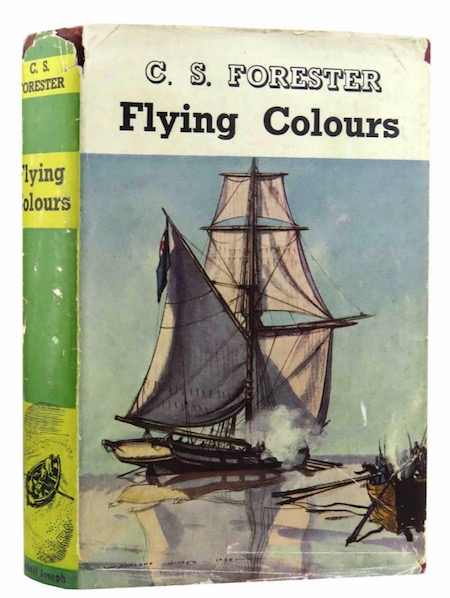
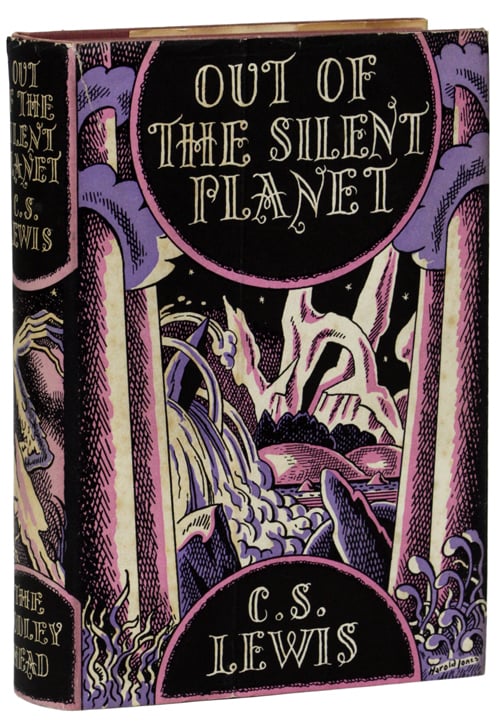
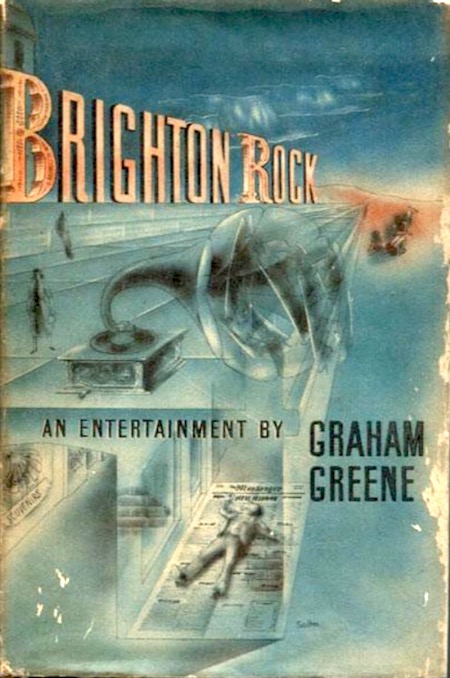

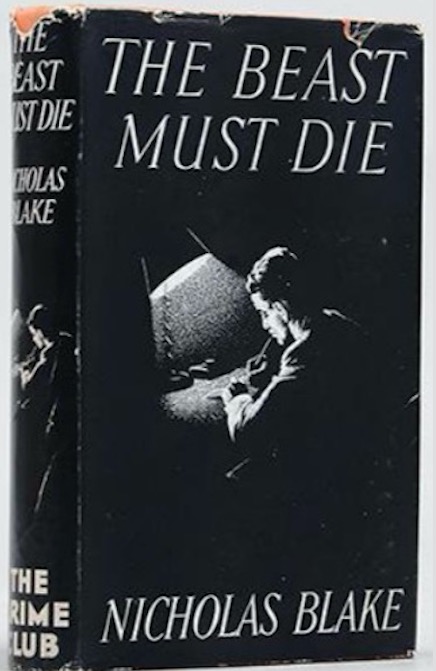
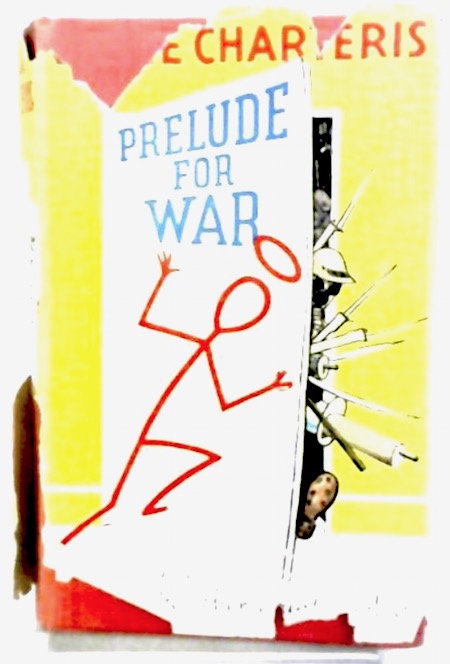
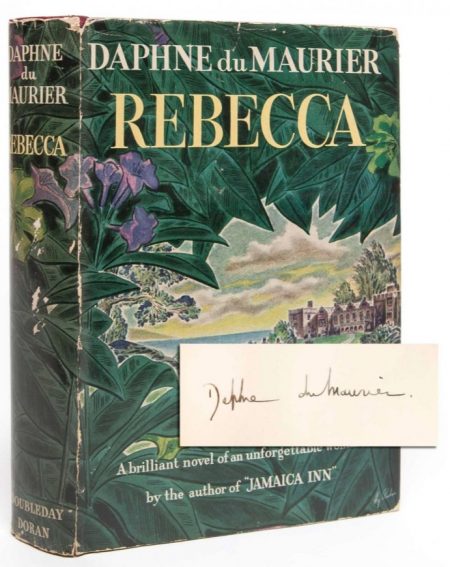
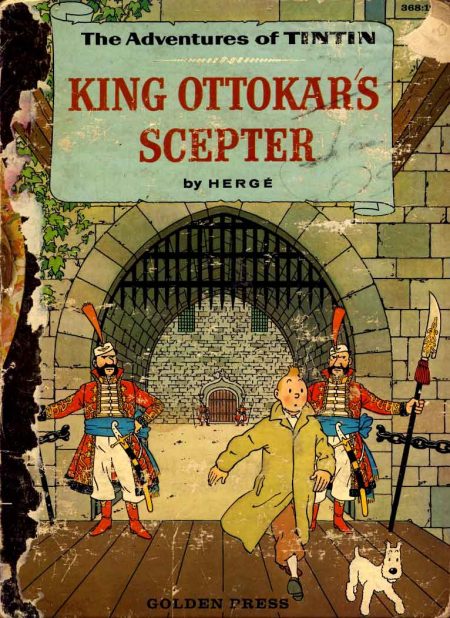
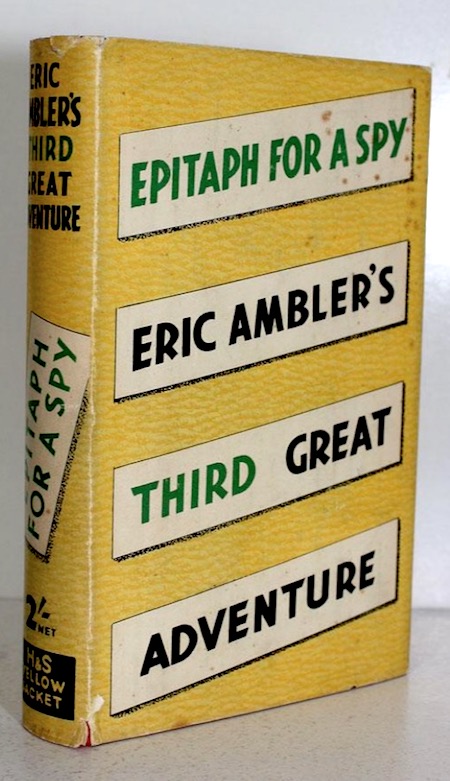
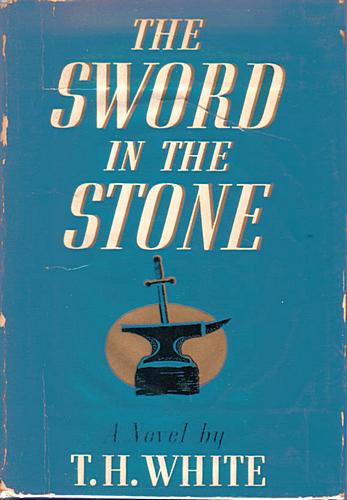
JOSH GLENN’S *BEST ADVENTURES* LISTS: BEST 250 ADVENTURES OF THE 20TH CENTURY | 100 BEST OUGHTS ADVENTURES | 100 BEST RADIUM AGE (PROTO-)SCI-FI ADVENTURES | 100 BEST TEENS ADVENTURES | 100 BEST TWENTIES ADVENTURES | 100 BEST THIRTIES ADVENTURES | 75 BEST GOLDEN AGE SCI-FI ADVENTURES | 100 BEST FORTIES ADVENTURES | 100 BEST FIFTIES ADVENTURES | 100 BEST SIXTIES ADVENTURES | 75 BEST NEW WAVE SCI FI ADVENTURES | 100 BEST SEVENTIES ADVENTURES | 100 BEST EIGHTIES ADVENTURES | 75 BEST DIAMOND AGE SCI-FI ADVENTURES | 100 BEST NINETIES ADVENTURES (in progress) | 1994 | 1995 | 1996 | 1997 | 1998 | 1999 | 2000 | 2001 | 2002 | 2003 | NOTES ON 21st-CENTURY ADVENTURES.
